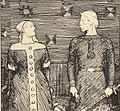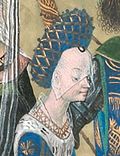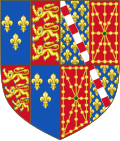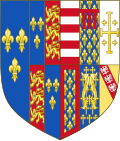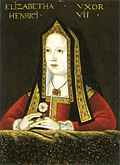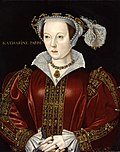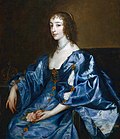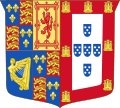Top Qs
Timeline
Chat
Perspective
List of English royal consorts
Spouses of English monarchs From Wikipedia, the free encyclopedia
Remove ads
The English royal consorts listed here were the spouses of the reigning monarchs of the Kingdom of England, excluding joint rulers William III and Mary II who reigned together in the 17th century.
Most of the consorts were women, and enjoyed titles and honours pertaining to a queen consort; some few were men, whose titles were not consistent, depending upon the circumstances of their spouses' reigns. The Kingdom of England merged with the Kingdom of Scotland in 1707, to form the Kingdom of Great Britain. There have thus been no consorts of England since that date.
Athelstan, Edward the Martyr, Harold Harefoot(?), Harthacnut, William II, Edward V, Edward VI and Elizabeth I are all excluded from this list because they never married.
Remove ads
House of Wessex, 886–1013
Remove ads
House of Denmark, 1013–1014
House of Wessex (restored, first time), 1014–1016
House of Denmark (restored), 1016–1042
House of Wessex (restored, second time), 1042–1066
Remove ads
House of Normandy, 1066–1135, & 1141
Summarize
Perspective
In 1066, the Duke of Normandy, William, killed Harold Godwinson at the Battle of Hastings, and overthrew the English elite, beginning the Norman Conquest of England. He established himself as king, his wife Matilda as queen consort, and beneficed his faithful vassals from the continent. His dynasty would not, however, outlive his children, becoming defunct with the death of his youngest son, Henry I, in 1135.
Remove ads
House of Blois, 1135–1154
In 1135, Stephen of Blois, the son of Henry I's sister Adela, seized the English throne, his cousin Empress Matilda's claims being ignored by the Norman barons. His wife, Matilda of Boulogne, became his Queen consort, but their son Eustace predeceased Stephen, and he was forced to appoint the Empress's son Henry as his successor.
Remove ads
House of Plantagenet, 1154–1485
Summarize
Perspective
House of Lancaster, 1399–1461, 1470–1471
Mary de Bohun, the first wife of Henry IV, died in 1394, 5 years before he became king. Therefore, she is not regarded as a consort.
House of York, 1461–1470, 1471–1485
Remove ads
House of Tudor, 1485–1603
Summarize
Perspective
The husband of Queen Mary I was Philip II of Spain, who became king of England in right of his wife. Therefore he is not regarded as a consort.
Disputed consort
Since Lady Jane Grey was briefly queen de facto, her husband, Guildford Dudley, is included here. They were both executed for treason.
Remove ads
House of Stuart, 1603–1707
Summarize
Perspective
With the death of Elizabeth I, the crown of England passed to her cousin and nearest heir, James VI of Scotland, who became James I of England as well. His dynasty would rule – interrupted by the Interregnum between 1649 and 1660 – until 1714. The Kingdom of England, however, was merged with the Kingdom of Scotland in 1707, to form a new Kingdom, the Kingdom of Great Britain, after which there ceased to be monarchs and consorts of England.
James II's first wife, Anne Hyde, died in 1671, 17 years before his accession to the throne. Therefore, she is not regarded as a consort.
Remove ads
Continuation of the list (British consorts)
This list continues at List of British royal consorts
See also
Notes
Wikiwand - on
Seamless Wikipedia browsing. On steroids.
Remove ads


